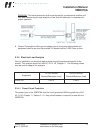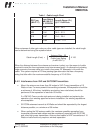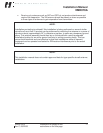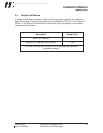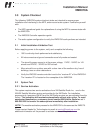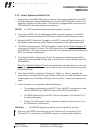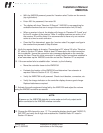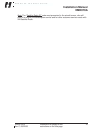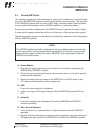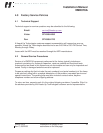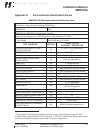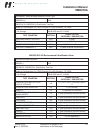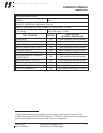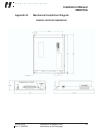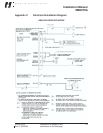
Installation Manual
XMD076A
XMD076A-3 Information is subject to the 17
Rev C, 06/22/06 restrictions on the title page
H E A D S U P T E C H N O L O G I E S
3.3 Ground EMI Check
The following procedure is to be performed to verify that no interference is noted through
the use of the XMD076A system on other aircraft systems and vice-versa. The operation
of the XMD076A system shall not result in NAV flags, constant location lightning strikes
on any installed Stormscope, noise on COMM channels, or other phenomena.
A ground test should be adequate for the XMD076A since it operates the same in flight.
If some aircraft systems cannot be verified on the ground, a flight test may be required.
Operate the aircraft systems as listed below and check the operation of both that system
and the XMD076A system.
A. Comm Radios:
1. Scan through radio channels to ensure there is no interference caused by the
XMD076A and XMC050 controller.
2. Check local ground and tower frequencies to ensure there is no break in squelch
caused by the installation.
3. Monitor the signal strength values of the XMD076A on the MFD (refer to Sec.
3.2.2 above) and transmit on various frequencies.
B. GPS:
1. Ensure the correct position is displayed.
2. Verify no change in GPS signal strength with the XMD076A powered ON and
OFF.
C. Autopilot:
1. Ensure the autopilot self-test passes OK with the XMD076A and XMC050
controller operating.
D. Other Aircraft Systems:
1. Verify that there is no adverse effect on flight instruments with the XMD076A
operating.
2. Operate other aircraft systems, especially radio transmitters, while monitoring the
XM signal strength values of the XMD076A on the MFD and XMC050 controller.
NOTE:
The XMC050 wireless controller is designed to conserve battery power and will enter
power-save mode if no key presses have been made for 30-seconds. During aircraft
system checks, press any key such as the “MEMORY” key as required to keep the
XMC050 in an active mode.



